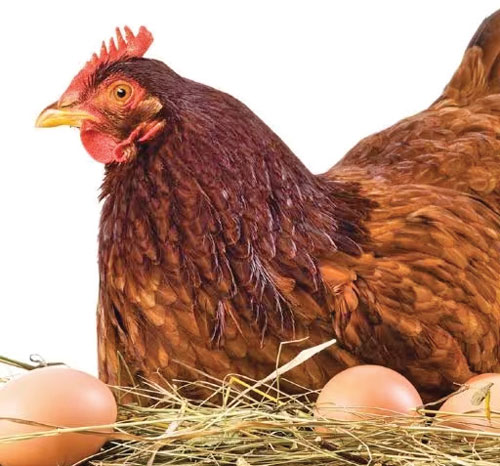ABOVE: Gut health is still a very hot topic in today’s layer production.
Laying persistence, egg shell quality and gut health are still very hot topics in today’s layer production, where the cycle is getting longer and pressure on poultry producers to reduce the use of antibiotics is growing.
But what does a healthy gut really mean in laying hens?
Gut health in layers
In the first instance, early post-hatch optimum nutrition plays a critical role in gut health by promoting the establishment of a healthy microflora, ensuring proper immune response and nutrient absorption capacity.
Second, the development of a rich and diverse microbiota has to be in balance with an efficient defence of the gut mucosa.
And lastly, a holistic approach to the choice of in-feed eubiotic additives and feed composition will positively influence the intestinal microbial community.
Different rearing conditions, physiological stages and microbiota call for different solutions.
Pullet gut health strategy
In young birds, the microbiota composition and its diversity can be dramatically influenced by environmental and management factors as it develops over time, before reaching equilibrium in adult animals.
That is why supplementing a one-day old chick with Cylactin – a high quality enterococcus faecium probiotic – ensures a solid basis for gut microbiome development.
By colonising the intestine very rapidly and synthesising specific protective substances – such as lactic acid and a biofilm, contributing to prevent adhesion of ecoli or salmonella to the epithelial cells – it significantly supports gut health.
A trial conducted in Latin America recently confirmed the positive effect of Cylactin in pullets, showing a significant 10 percent difference in live weight in comparison with a chlortetracycline treatment at 17 weeks of age.
The probiotic supplementation contributed to reaching the optimum pullet weight target, making the bird ready for the critical laying period up to its production peak.
This live weight benefit then turned into a 7 percent enhancement of the overall laying rate at 79 weeks of age.

Laying hens have a more mature digestive tract.
Layer gut health strategy
Laying hens, in comparison, have a more mature digestive tract and their gastrointestinal functionality can be effectively enhanced by using specific direct-acting gut flora modulators.
The synergistic combination of benzoic acid and specific essential compounds offered by Crina Poultry Plus – a registered zootechnical additive in Europe for broilers – seems to be also the eubiotic of choice for layers.
The essential oils components such as thymol, eugenol and piperine are known to enhance nutrient digestibility by stimulating production of digestive enzymes and improving the balance of gut microbiota.
Benzoic acid is one of the most effective organic acids for inclusion in poultry diets and is particularly effective against gram-negative bacteria.
A consistent improvement in productivity has been demonstrated in different conditions, showing a significant effect on laying rate and egg shell quality – especially shell thickness and strength – in France, Brazil and China.
Furthermore, Crina Poultry Plus was shown to maintain high laying performance and low mortality during challenging conditions, such as colibacillosis or heat stress.
The trend towards using antibiotics more responsibly is growing, not only in the poultry industry, but in livestock production worldwide.
The need for a cost-effective nutritional solution is stronger than ever.
Cylactin, associated with Crina Poultry Plus, offers a comprehensive eubiotic approach for pullet and layers, and consistently supports the needs of egg producers.
For more information, contact DSM Animal Nutrition and Health, dsm.com

